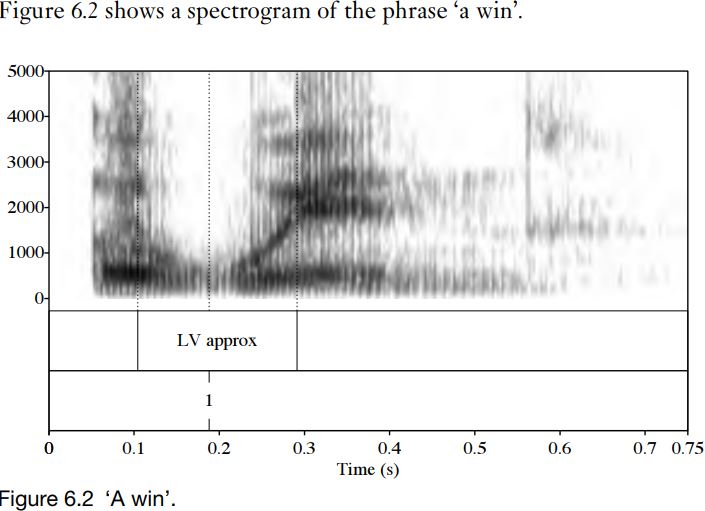


 Grammar
Grammar
 Tenses
Tenses
 Present
Present
 Past
Past
 Future
Future
 Parts Of Speech
Parts Of Speech
 Nouns
Nouns
 Verbs
Verbs
 Adverbs
Adverbs
 Adjectives
Adjectives
 Pronouns
Pronouns
 Pre Position
Pre Position
 Preposition by function
Preposition by function 
 Preposition by construction
Preposition by construction
 Conjunctions
Conjunctions
 Interjections
Interjections
 Grammar Rules
Grammar Rules
 Linguistics
Linguistics
 Semantics
Semantics
 Pragmatics
Pragmatics
 Reading Comprehension
Reading Comprehension|
Read More
Date: 2023-09-13
Date: 13-6-2022
Date: 2023-10-10
|

The portion labelled ‘LV approx’ is the portion where there are clear signs of labiovelar approximation. As the lips are rounded and the tongue back is raised towards the velum, the first formant moves downwards ([u], like [i], has a low F1), while F2 gets much lower, because of both tongue backing and lip-rounding. As the approximations are made, the vocal tract narrows, and the amplitude diminishes: it can be seen from the spectrogram that there is almost no visible information much above 1000 Hz
Notice that for both [j] and [w] the formants are moving throughout the labelled portions. The point labelled ‘1’ for [j] is where F2 is highest and F1 is lowest: this is the most ‘[j]-like’ part of the portion. The point labelled ‘1’ for [w] is where F1 and F2 are lowest: the most ‘[w]-like’ part of the portion.
Auditorily, as visually, the phonetics associated with [j] and [w] is distributed over a long stretch of time: this is a recurrent property of approximants, and it is most clearly visible when we look at spectrograms, or listen to very short stretches of speech where the ‘blending’ of sounds into one another is very obvious. Notice that the formants are constantly moving: there is no ‘steady state’, because in making an approximant, the articulators are gliding into and out of a kind of articulatory target.
|
|
|
|
دخلت غرفة فنسيت ماذا تريد من داخلها.. خبير يفسر الحالة
|
|
|
|
|
|
|
ثورة طبية.. ابتكار أصغر جهاز لتنظيم ضربات القلب في العالم
|
|
|
|
|
|
|
سماحة السيد الصافي يؤكد ضرورة تعريف المجتمعات بأهمية مبادئ أهل البيت (عليهم السلام) في إيجاد حلول للمشاكل الاجتماعية
|
|
|